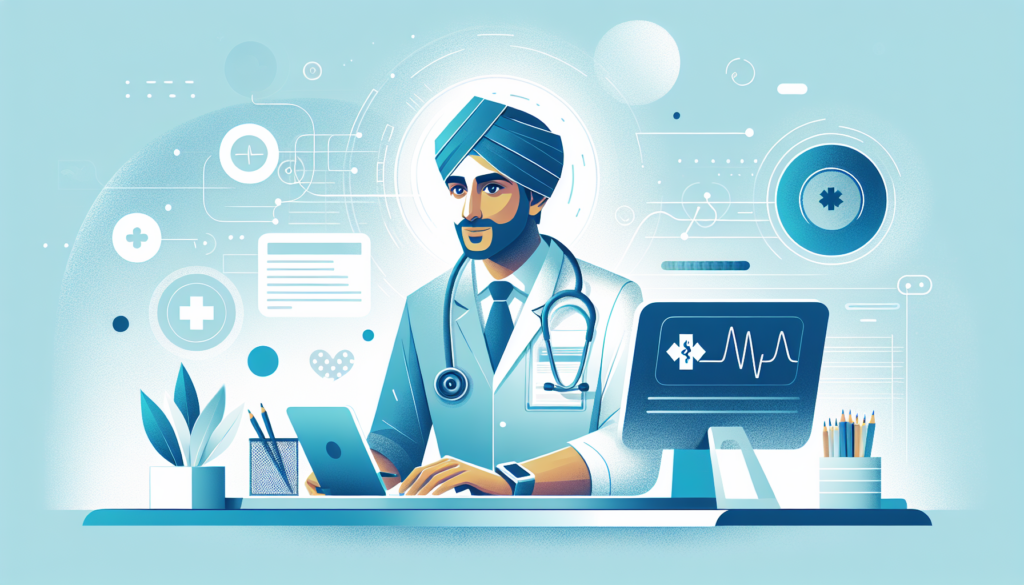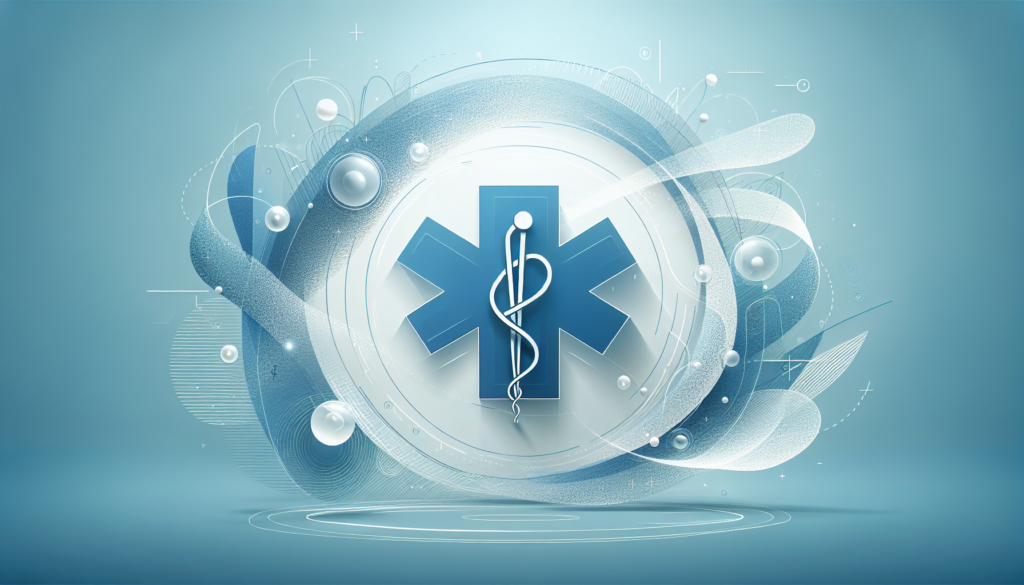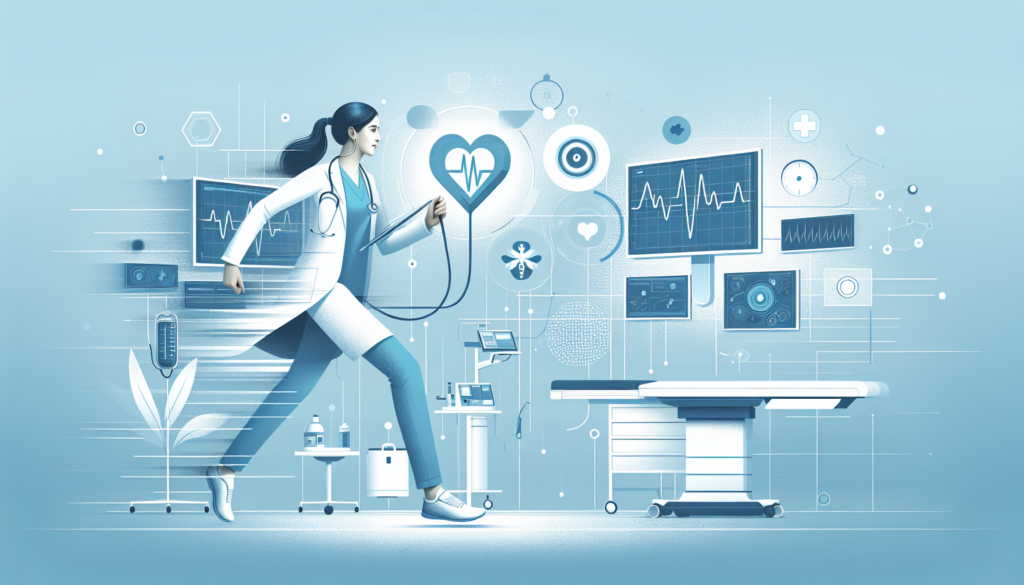Understanding the Role of a Medical Transcriptionist
The medical transcriptionist serves as a fundamental linchpin in the healthcare documentation realm. Tasked with converting the spoken word into a written record, these professionals listen attentively to audio recordings made by physicians or other healthcare providers. The transcription process includes documenting diagnoses, treatment plans, operative reports, and other notes that pertain to a patient’s medical history and encounters. Accuracy is paramount, as these transcribed records become part of a patient’s permanent medical file and are used for billing, coding, and insurance purposes. Medical transcriptionists must not only be fast and precise but also knowledgeable in medical terminology and the nuances of healthcare documentation.
In an age dominated by digital technology, the role of the medical transcriptionist is evolving. With the advent of Electronic Health Records (EHRs), their responsibilities have expanded to include editing and formatting reports into standardized templates, ensuring that the documentation meets regulatory compliance and privacy standards. They routinely interface with advanced dictation and transcription software, making technological proficiency essential. Additionally, the transcriptionist often plays a critical role in quality assurance, double-checking that the machine-generated transcripts are accurate before they make their way into a patient’s EHR.
– Core Responsibilities:
– Transcribing audio recordings into written documentation
– Ensuring accuracy and confidentiality of patient information
– Understanding and applying medical terminology
– Editing and standardizing medical documentation
– Collaborating with healthcare professionals to clarify information
Given their critical role in the continuity of care, medical transcriptionists must possess a keen ear for detail and exceptional language skills. They often train in anatomy, physiology, medical procedures, legal practices, and ethics to fully comprehend the context of the dictations they transcribe. This diverse skill set enables transcriptionists to adeptly navigate the multifaceted landscape of medical documentation while safeguarding the integrity of the medical record.
Despite the proliferation of voice-recognition technology, the need for skilled medical transcriptionists endures, particularly in complex cases or specialties where the margin for error is exceptionally low. In such scenarios, the transcriptionist’s ability to interpret and accurately transcribe complex medical jargon is indispensable. As the healthcare industry continues to grow and evolve, these professionals adapt accordingly, ensuring that patient care, administrative efficiency, and data accuracy remain the linchpins of their profession.
– Desired Skills and Qualities:
– Keen attention to detail and high-level language skills
– Training in medical fields such as anatomy and medical procedures
– Technical proficiency with dictation and EHR software
– Strong grasp of healthcare regulations and practices
– Commitment to the integrity of the medical record and confidentiality
Key Responsibilities and Duties in Medical Transcription
The realm of medical transcription is pivotal in maintaining accurate and timely health records. The key responsibilities and duties of medical transcriptionists go beyond typing speed and familiarity with medical jargon. A proficient medical transcriptionist acts as a guardian of medical documentation, ensuring that every transcribed note accurately reflects the healthcare provider’s diagnosis, observations, and instructions. They focus on capturing precise information from audio recordings, often provided by physicians and other healthcare professionals, and transcribing them into written format.
Firstly, transcriptionists are tasked with reviewing and verifying audio recordings for clarity and accuracy. They employ their expansive knowledge of medical terminology, procedures, and treatments to decipher complex medical information. This accuracy is crucial for patient care continuity, billing, and legal purposes. They also need to have an in-depth understanding of the healthcare provider’s vernacular to ensure context is never lost.
- Reviewing audio recordings meticulously
- Understanding healthcare terminology and context
- Ensuring accurate reflection of healthcare provider’s notes
Furthermore, transcriptionists are responsible for editing and formatting transcribed documents to meet the specific standards of the facility they serve. This includes not only correcting spelling and grammar but also ensuring that the transcription aligns with legal and ethical standards. Attention to detail is paramount, as is a strong grasp of the English language and medical grammar. They must also be adept at using transcription equipment and software, which facilitates the accurate conversion of voice recordings to text.
The end-product of their work, the medical report, is integrated into a patient’s health record. Therefore, they must ensure that these documents are consistent and easily retrievable. This often involves a good understanding of Electronic Health Record (EHR) systems, to which the transcriptions are typically uploaded. These systems demand that transcriptionists possess competent computer skills to navigate through and ensure the secure and confidential handling of sensitive information.
- Editing and formatting to comply with healthcare standards
- Operate transcription equipment and software proficiently
- Ensure reports are consistent and retrievable within EHR systems
- Uphold patient confidentiality and data security
Key Takeaways
| Responsibility/Duty | Key Skills/Attributes |
| Verifying audio recordings | Attention to detail, medical terminology knowledge |
| Editing and formatting transcriptions | English proficiency, knowledge of medical grammar, editing skills |
| Document consistency and EHR system management | Competent computer skills, organizational ability |
| Upholding data security and confidentiality | Understanding of confidentiality laws, data security protocols |
Skills and Qualifications for a Medical Transcription Job
Embarking on a career as a medical transcriptionist requires a distinctive set of skills and qualifications tailored to the precise and high-stakes nature of the medical field. Firstly, a strong foundation in medical terminology is indispensable. Professionals in this role are tasked with converting audio recordings by healthcare practitioners into accurate written documentation. This process demands extensive knowledge of terminology pertaining to anatomy, physiology, diagnostic procedures, pharmacology, and treatment assessments to ensure precision in transcription. Furthermore, an adept transcriptionist must be well-versed in the linguistic nuances and medical jargon that vary across specialties, from oncology to pediatrics.
Another critical qualification for a medical transcriptionist is exceptional listening skills. The capacity to discern and accurately transcribe complex medical information often delivered in a variety of accents and dictation styles is vital. Not to be overlooked are the roles of speed and efficiency; successful transcriptionists must manage their time effectively, optimizing their workflow to meet pressing deadlines while maintaining steadfast accuracy. Essential too are superior typing skills, with an emphasis on both speed and precision, often measured in words per minute (WPM).
– Comprehensive Understanding of Medical Terminology
– Anatomy
– Physiology
– Diagnostic Procedures
– Pharmacology
– Treatment Assessments
– Exceptional Listening Skills with a Focus on:
– Clarity
– Accent comprehension
– Dictation style adaptability
– Proficiency in Typing
– High words per minute rate
– Accuracy in transcription
The convergence of technology and healthcare has elevated the importance of computer literacy in medical transcription roles. A transcriptionist must navigate various Electronic Health Record (EHR) systems, voice recognition technologies, and transcription software, adapting to new tools as they emerge. Knowledge of HIPAA compliance and regulations is equally crucial to protect patient confidentiality in all transcribed documents. Candidates must demonstrate diligence and attention to details, minimizing errors which could significantly impact patient outcomes or legal compliance.
Beyond the technical capabilities, interpersonal skills also play a significant role. A transcriptionist liaises with healthcare providers to clarify inconsistencies or ambiguities in the recordings. Lastly, a perpetual readiness to learn and update one’s knowledge base in response to medical advancements and updates in healthcare protocols ensures that a medical transcriptionist remains an invaluable asset to the medical field.
– Proficiency in Technology and Software, Including:
– Electronic Health Record (EHR) Software
– Voice Recognition Technology
– Transcription Platforms
– Knowledge of Legal and Ethical Compliance:
– HIPAA Regulations
– Patient Confidentiality
– Commitment to Continuous Learning and Adapting
– Interpersonal Skills:
– Clear communication
– Professional interaction with healthcare providers
The Impact of Technology on Medical Transcription Careers
The advent of technology in the healthcare sector has brought about significant changes in various professions, not least among them the field of medical transcription. As artificial intelligence (AI) and machine learning models become more sophisticated, they are increasingly capable of understanding complex medical terminology and patient-physician interactions. This evolution has a mixed impact on the careers of medical transcriptionists. On the one hand, it poses a challenge to the traditional role of typing out notes from audio recordings, while on the other, it creates new opportunities for professionals to shift towards roles that require more nuanced understanding and management of these advanced systems.
Medical scribes and transcriptionists who once were the mainstay of documenting patient encounters are now adapting to new tools designed to increase accuracy and efficiency. One such example is AI-powered digital scribing services, which are reshaping the landscape of medical note-taking. As these technologies improve, there is less need for manual transcription, but increased demand for oversight, quality control, and assurance. Professionals with expertise in medical terminology and patient care can now focus on ensuring that the AI-generated notes are accurate and capture the nuances of patient interactions, thereby enhancing the overall quality of patient records.
- Advancements in AI: Increase in efficiency and accuracy of medical documentation.
- Changing Roles: Transition from manual transcription to oversight and quality assurance.
- Quality Enhancement: Professionals contribute to improving the quality of AI-generated notes.
Moreover, technology is not just altering tasks, but broadening the scope of what medical transcriptionists can do. Career paths may now include specialized areas such as medical coding, editing, and data management. The deep understanding of medical jargon and context that transcriptionists possess is invaluable when training and refining AI algorithms. This fundamental change in job functions indicates that technology is less about replacing human workers and more about augmenting their skills to push the boundaries of healthcare administration. Consequently, the focus is shifting from fear of obsolescence to embracing adaptation, with emphasis on continuous learning and flexibility within the industry.
- Specialization: Emergence of new specialized roles such as medical coding and editing.
- Algorithm Training: Utilization of medical expertise to improve AI technology.
- Embracing Change: Adaptation and professional development within new technology parameters.
Advancing Your Career: Opportunities and Growth in Medical Transcription
The field of medical transcription offers a unique blend of language skills, medical knowledge, and technological proficiency, acting as a critical component in the healthcare documentation process. As the healthcare industry evolves with technological advancements, medical transcriptionists are finding new pathways to expand their roles and ascend in their careers. These professionals are no longer confined to traditional transcription tasks; they are embracing roles that require expertise in editing, voice recognition technology, and electronic health record systems. The adoption of advanced software not only shifts the nature of their work but also opens doors to supervisory positions, quality assurance specialists, and consultancy roles within the sphere of healthcare documentation.
One of the most significant opportunities for career growth in medical transcription is the ability to specialize. With the medical field covering a vast array of specialties, transcriptionists can focus on specific areas such as cardiology, orthopedics, or radiology. Here are a few specialization avenues:
– **Medical Specialty Transcription**: Growing in fields like oncology or pediatrics, focusing on specialized medical terminology.
– **Surgical Transcription**: In-depth understanding of surgical procedures and documentation.
– **Legal and Compliance Documentation**: Ensuring transcribed documents comply with healthcare laws and regulations.
Specialization can lead to increased compensation and can establish transcriptionists as subject matter experts, often sought after for their knowledge and precision.
Moreover, with the integration of artificial intelligence and machine learning in transcription services, like that provided by [ScribeMD.ai](https://scribemd.ai), there is a shifting landscape for transcriptionists to become key players in refining and customizing AI outputs. This presents a valuable opportunity for transcriptionists to upskill in natural language processing and AI software management, positioning them as indispensable assets in the maintenance and improvement of digital transcription tools. Consequently, the adoption of such innovative technologies effectively enhances the accuracy and efficiency of medical records, reinforcing the importance of human oversight in ensuring the highest standards of patient data.
Furthermore, educational advancements in the field are opening up comprehensive career pathways. Obtaining certifications such as Registered Healthcare Documentation Specialist (RHDS) or the Certified Healthcare Documentation Specialist (CHDS) validates a transcriptionist’s competencies and broadens professional possibilities. Advanced education options, including associate and bachelor’s degrees in health information management or medical transcription, also pave the way for greater leadership roles within healthcare teams. Here is a compact list of potential roles resulting from further education and certification:
– **Health Information Manager**: Overseeing the entire medical documentation process.
– **Clinical Documentation Specialist**: Ensuring the accuracy and integrity of patient records.
– **Education and Training Officer**: Training new transcriptionists on evolving industry standards and technologies.
Embracing these educational pursuits can not only raise a transcriptionist’s profile within the healthcare documentation field but also enhance the quality of care by ensuring thorough and accurate medical records.



